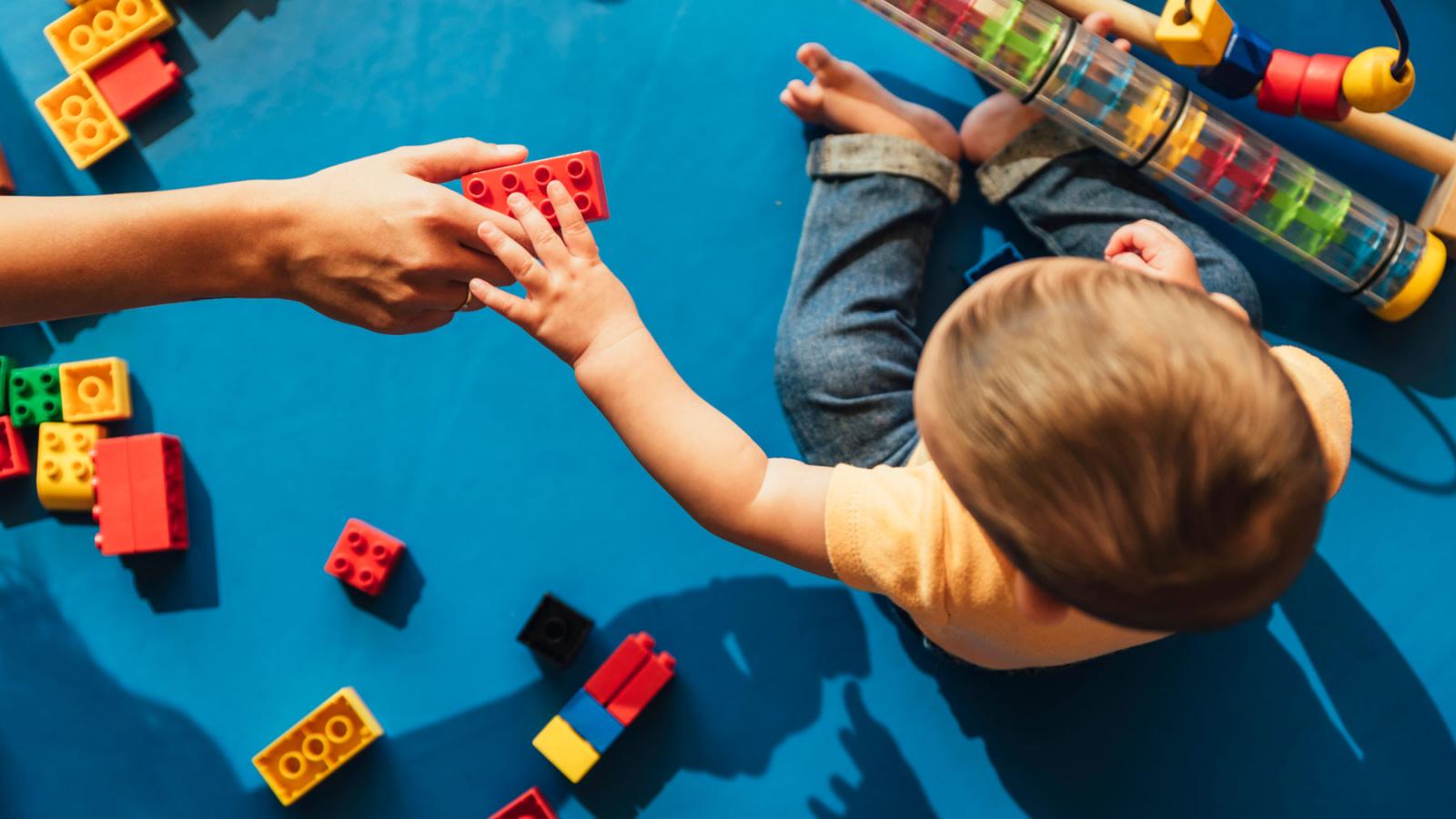Banner

Title
resources
Resource Library
Our Resource Library contains materials and assistance for early childhood educators and those they serve. Explore our selection of podcasts, tip sheets, websites, documents, and self-study courses.
Results: Page 162 of 210
| Resource Name | Description | Resource Type |
|---|---|---|
| Setting Up the Environment to Meet the Physical Needs of All Children: Part Two | Priscilla Weigel and Vicki Thrasher Cronin continue their discussion of providing more physical movement by discussing what was needed to change the existing space and how the whole center helped make this idea a reality. | Podcast |
| Seven Strategies for Building an Accepting and Inclusive Environment | Highlights how early care and education professional can create an environment in which all children have a sense of belonging. | Tipsheet |
| Share the love in February; It's National Children's Dental Health Month | Here is a video from the National Center on Early Childhood Health and Wellness that offers tips on how to help improve children's oral health. | |
| Sharing Concerns with Families--Having the Conversation: Part Three | In part 3 of our series on Sharing Concerns with Families, Priscilla Weigel and Cindy Croft discuss the sensitive topic of talking to a family about their child’s development. This is often one of the hardest jobs an early educator will undertake but it is critically important for the child for whom early intervention can make a world of difference. We will talk about ways to share developmental information and continue building the important relationship between parent and caregiver. | Podcast |
| Sharing Concerns with Families--Observations and Recordings: Part One | In this podcast, we will begin a series on the sensitive topic of how to share developmental concerns with families. The first steps in talking to families about a developmental red flag is to have objective, nonjudgmental observations and recordings that can give them an accurate developmental picture. This is foundational to a successful conversation and will help allay some of your anxiousness as you approach families with your concerns. | Podcast |
| Sharing Concerns with Families--Setting the Stage: Part Two | Once we have gathered our information to share about a developmental concern, we need to set the stage for our conversation with the family. The ongoing partnership between the early educator, family, and child will rely on trust, confidentiality, and compassion. In this podcast, we will share some fundamental tips that will help us as we prepare to talk with the family, including when and how to hold the meeting. | Podcast |
| Sharing Developmental Concerns with Families | How to prepare for and talk with family members when there are developmental or behavioral concerns. | Tipsheet |
| Should Childhood Trauma Be Treated As A Public Health Crisis? | When public health officials get wind of an outbreak of Hepatitis A or influenza, they spring into action with public awareness campaigns, monitoring and outreach. But should they be acting with equal urgency when it comes to childhood trauma? A new study published in the Journal of the American Medical Association suggests the answer should be yes. | Website |
| Shwachman-Diamond Syndrome Foundation | The Shwachman-Diamond Syndrome Foundation site contains information on the overall effects of Shwachman-Diamond Syndrome and the effect on specific organs or parts of the body. The site also contains a quarterly newsletter, research information, and a message board. | Website |
| Siblings: The Autism Spectrum Through Our Eyes | Growing up with a sibling on the autistic spectrum can be difficult, and the needs of a child with autism can leave neurotypical children feeling overshadowed. This book recognizes that brothers and sisters of children with autism need just as much love and attention as they do. This collection of personal experiences, both good and bad, has been written by siblings for siblings. Each individual tale comes directly from real-life experience, offering empathy, constructive advice and reassurance that occasional feelings of resentment and embarrassment are entirely normal. Siblings of all ages candidly recount how being 'the neurotypical one' can be frustrating, but equally rewarding. Every story is injected with wisdom gained by young people who often have to grow up a lot more quickly than their peers. This is essential reading for children and teenagers with a sibling on the autistic spectrum, and for parents wishing to understand how autism in the family will affect their neurotypical child. To order the book, follow the link. | Document |
Results: Page 162 of 210